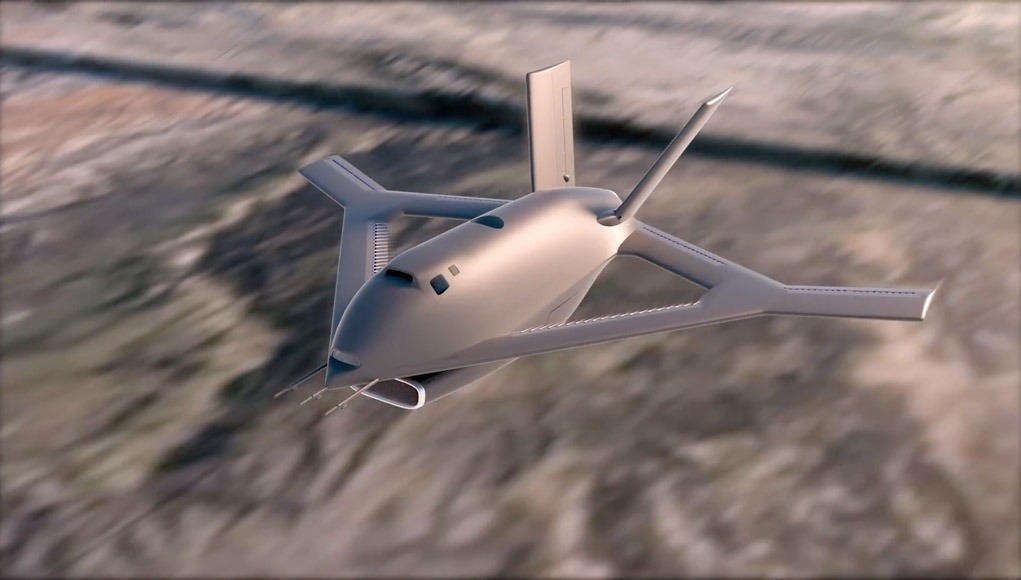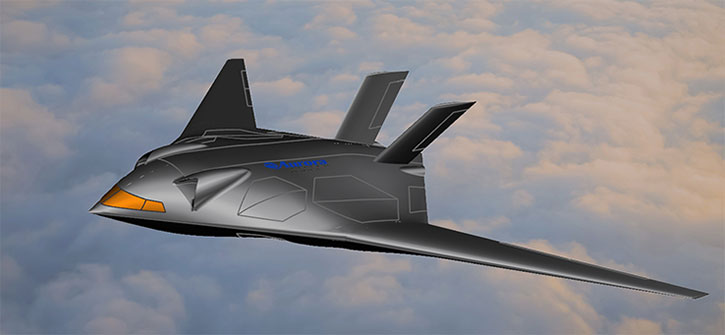Aurora Flight Sciences, a Boeing company, has begun manufacturing work on a new X-plane for the Defense Advanced Research Projects Agency’s (DARPA) Control of Revolutionary Aircraft with Novel Effectors (CRANE) program. This latest phase follows completing the critical design review (CDR) for the experimental aircraft, designated X-65.
X-65 is purpose-designed for testing and demonstrating Active Flow Control (AFC) for multiple effects, including flight control at tactical speeds and performance enhancement across the flight envelope. Active flow control could improve aircraft performance by removing jointed surfaces such as rudder, ailerons, flaps, and canards, which drive design configurations that increase weight and mechanical complexity. Demonstrating AFC for stability and control in flight would help open the design trade space for future military and commercial applications.
The AFC system supplies pressurized air to fourteen AFC effectors embedded across all flying surfaces, including multiple wing sweeps. The aircraft is configured to be modular, featuring replaceable outboard wings and swappable AFC effectors, which allows for future testing of additional AFC designs.
Active flow control technology has the potential to replace traditional flaps and rudders, which are used to maneuver most aircraft today. AFC may deliver benefits in aerodynamics, weight, and mechanical complexity. X-65 is designed to demonstrate the benefits of AFC for both commercial and military applications.
Component tooling and part fabrication for the 30 ft wingspan, uncrewed X-plane are now underway at Aurora facilities in West Virginia and Mississippi. Plans include building the airframe at Aurora, West Virginia, and system integration and ground testing at Aurora’s headquarters in Manassas, Virginia. The program would culminate in flight tests of the full-scale, 7000 lb. X-65 aircraft at speeds up to Mach 0.7. Flight testing is targeted for the summer of 2025.

SPeed and Runway INdependent Technologies (SPRINT)
In November 2023, Aurora Flight Sciences was selected for phase 1 of another DARPA X-plane X-Plane demonstration project, the SPeed and Runway INdependent Technologies (SPRINT). Other companies selected to provide SPRINT conceptual designs include Bell Textron, Inc., Northrop Grumman Aeronautic Systems, and Piasecki Aircraft Corporation. The SPRINT program aims to design, build, and fly an X-Plane to demonstrate technologies and integrated concepts necessary for a transformational combination of aircraft speed and runway independence. This initial award funds work to reach a conceptual design review and includes an executable option to continue to work through a preliminary design review.

Under this award, Aurora is designing a high lift, low drag fan-in-wing (FIW) demonstrator aircraft that integrates a blended wing body platform, with embedded engines and moderate sweep, with a vertical flight design comprised of embedded lift fans linked to the engines via mechanical drives. The aircraft would deliver game-changing air mobility capability by combining cruise at over 450 KTAS with vertical takeoff and landing (VTOL) in a single platform.
The combined Aurora and Boeing teams bring deep experience in agile vehicle prototyping, vertical lift and cruise transition technology, and blended wing body aero performance. The program will build on past flight programs like the Boeing X-48 blended wing body aircraft and the Aurora Excalibur UAS that combined jet-borne vertical lift with three electric, louvered lift fans that would retract into the wing in forward flight.
Design work will occur at Aurora and Boeing facilities across multiple states, including Virginia, Massachusetts, and Pennsylvania. The program targets the X-Plane demonstrator’s first flight within 42 months.




















